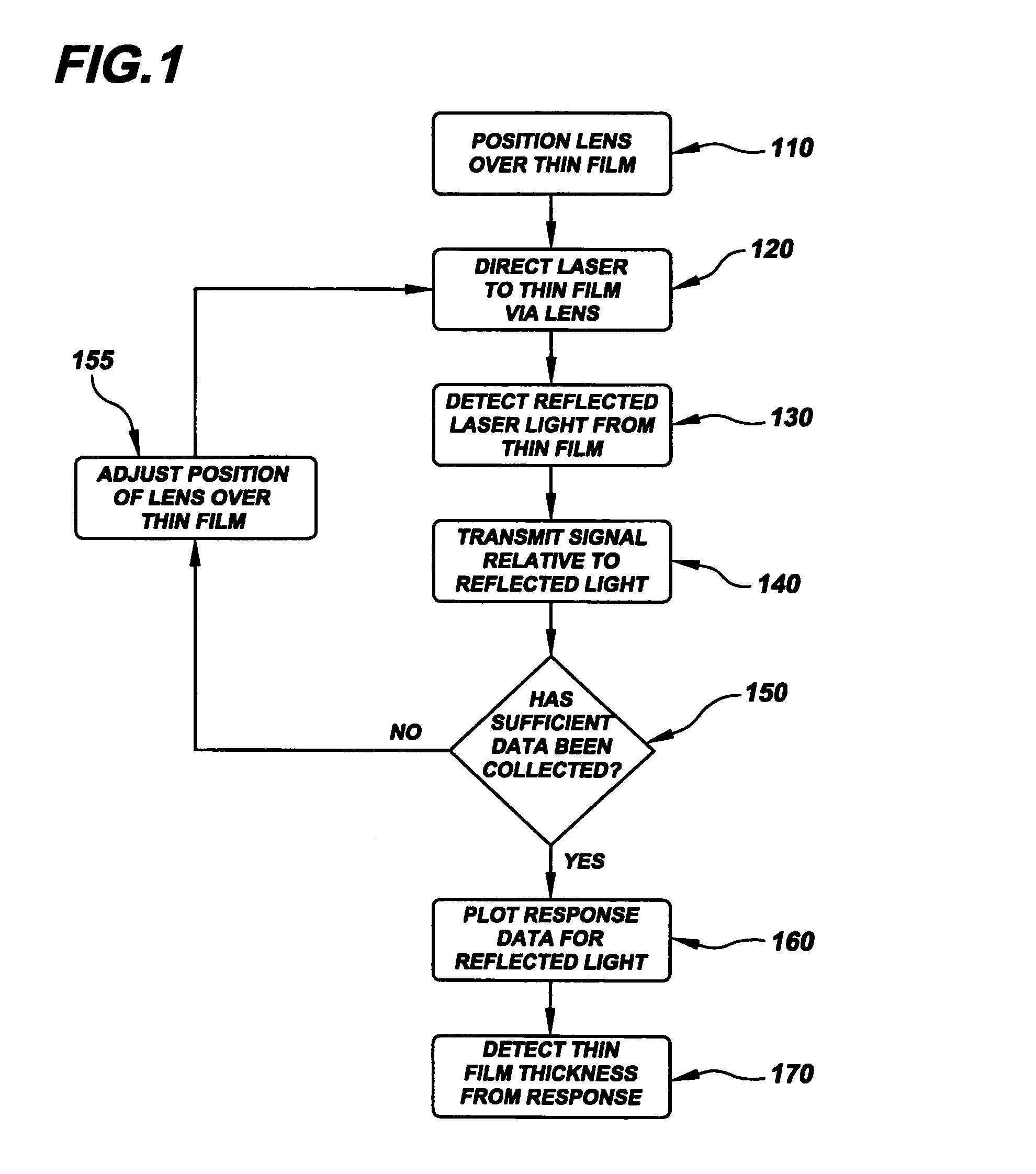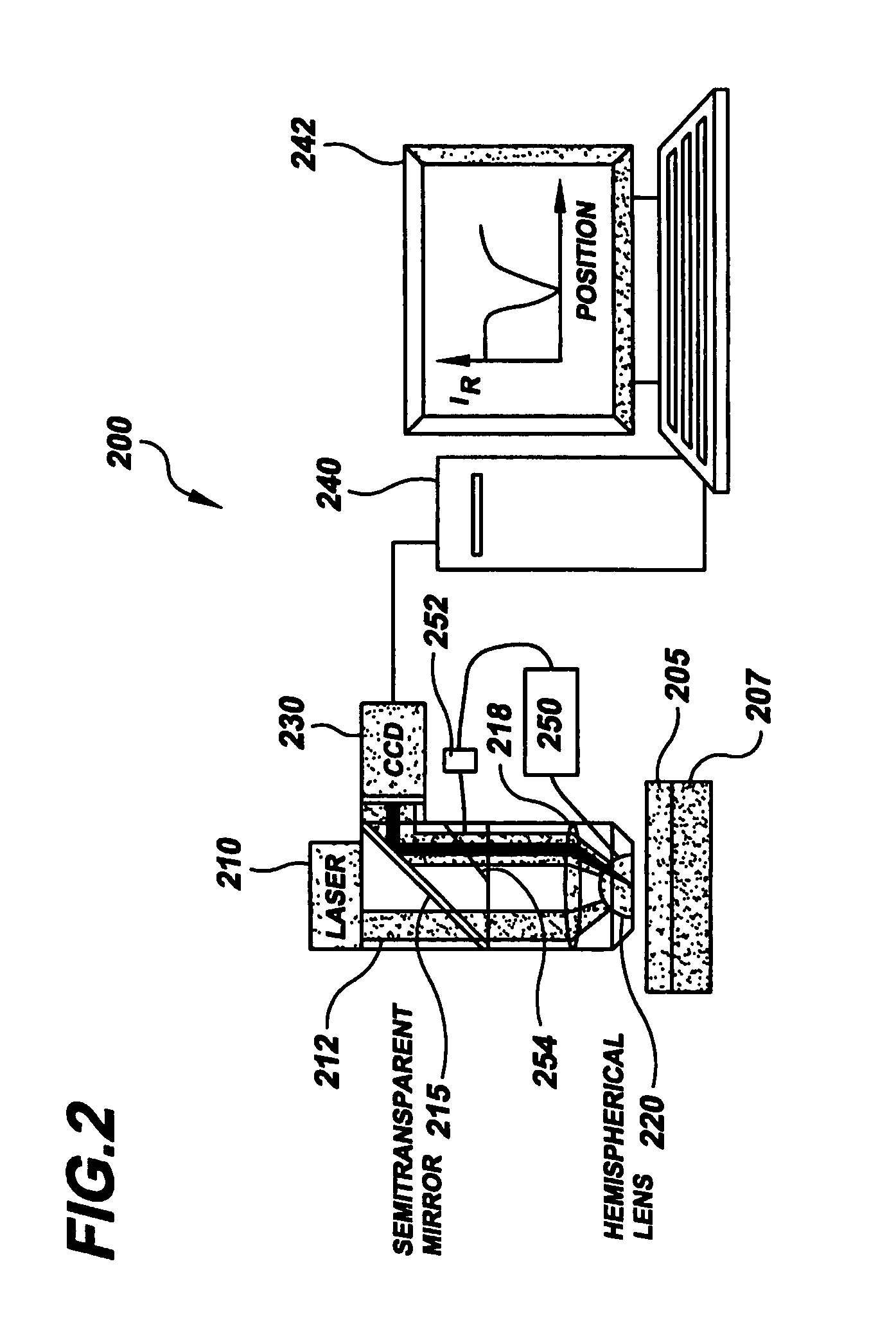Dimension measurement approach for metal-material
- Summary
- Abstract
- Description
- Claims
- Application Information
AI Technical Summary
Benefits of technology
Problems solved by technology
Method used
Image
Examples
Embodiment Construction
[0019]The present invention is believed to be applicable to a variety of different types of devices and processes, and the invention has been found to be particularly suited for semiconductor devices, analysis and manufacture involving approaches to the measurement of a variety of structural dimensions. While the present invention is not necessarily limited to such applications, various aspects of the invention may be appreciated through a discussion of various examples using this context.
[0020]According to an example embodiment of the present invention, an optical approach involving light excitation is used for measuring physical dimensions of a structure. Plasmon-exciting light is directed at a structure and electrons therein are excited. A characteristic of reflected light related to the electron excitation is used to identify a dimensional parameter of the structure.
[0021]According to a more particular example embodiment of the present invention, a non-invasive optical approach ...
PUM
 Login to View More
Login to View More Abstract
Description
Claims
Application Information
 Login to View More
Login to View More - R&D
- Intellectual Property
- Life Sciences
- Materials
- Tech Scout
- Unparalleled Data Quality
- Higher Quality Content
- 60% Fewer Hallucinations
Browse by: Latest US Patents, China's latest patents, Technical Efficacy Thesaurus, Application Domain, Technology Topic, Popular Technical Reports.
© 2025 PatSnap. All rights reserved.Legal|Privacy policy|Modern Slavery Act Transparency Statement|Sitemap|About US| Contact US: help@patsnap.com



